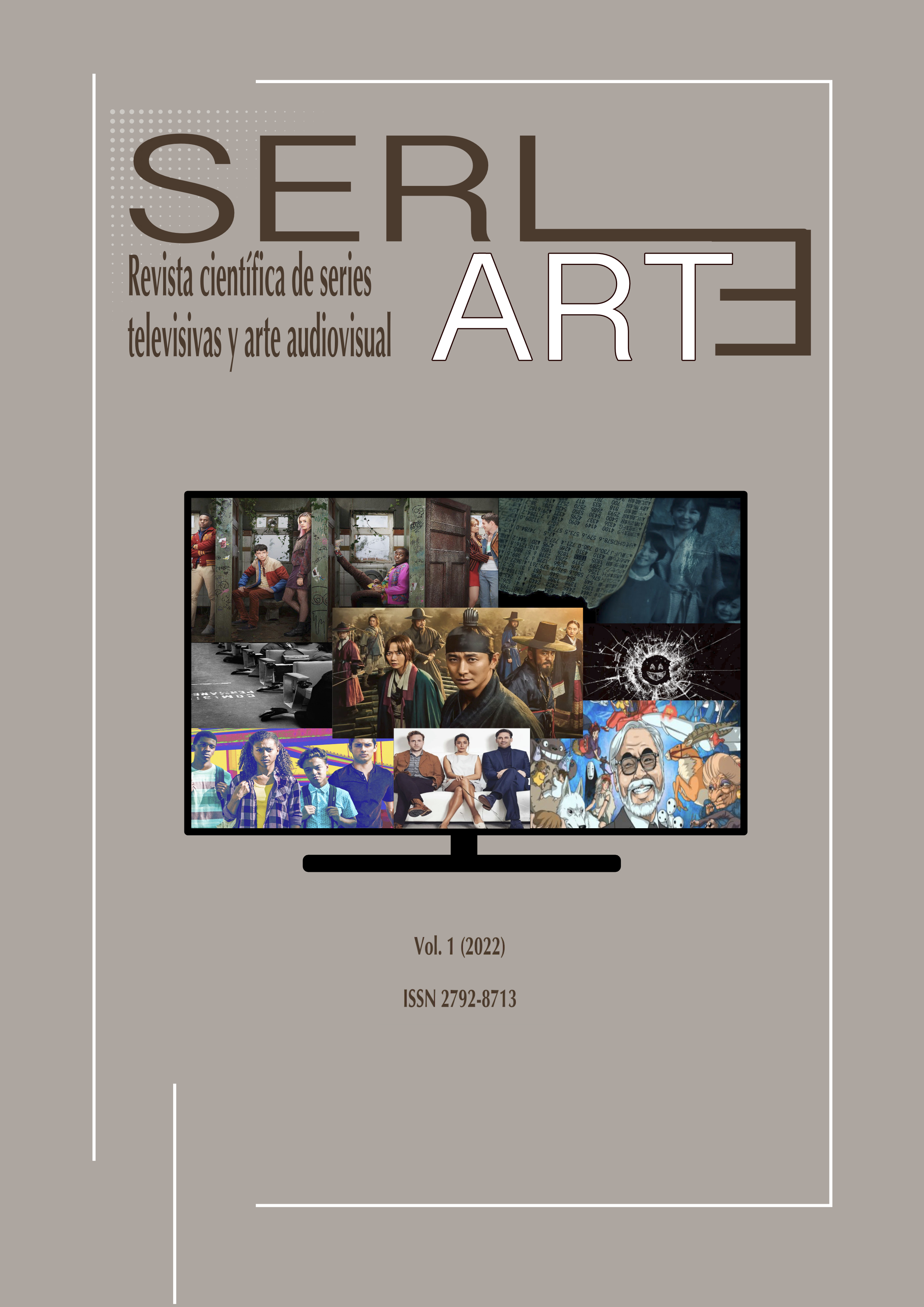La traducción del argot sexual en series juveniles: el doblaje de Sex Education
Contenuto principale dell'articolo
Abstract
Nowadays, Netflix has clearly established itself in Spain as one of the most successful VOD platforms in the audiovisual scene. The key to its success is the variety of productions available, which satisfy subscribers of all ages and social groups. One of the most popular series among the young population is Sex Education (2019), a series that has dared to faithfully represent the behavior and speech of teenagers in daily situations related to sexuality, reproducing their language with no taboo. In the present study, we conduct an analysis of the translation (EN-ES) of the youth sociolect in terms of sexual slang, in order to determine the predominant linguistic register in both British and Spanish cultures, as well as the levels of intensity of the terminology used in both languages. Finally, we evaluate the impact of sexual slang among the young Spanish audience to ascertain whether dubbing provides the same degree of naturalness and adequacy of the sociolect, so as to ensure the success of Sex Education among its consumers.
Downloads
Publication Facts
Reviewer profiles N/A
Author statements
Indexed in
- Publisher
- Ucopress. Cordoba University Press
Dettagli dell'articolo
Riferimenti bibliografici
ÁVILA CABRERA, José Javier (2015), «Propuesta de modelo de análisis del lenguaje ofensivo y tabú en la subtitulación», Verbeia: journal of English and Spanish studies, (0), pp. 8-27.
ALLAN, Keith y BURRIDGE, Kate (2006), Forbidden Words. Taboo and the Censoring of Language, Cambridge: Cambridge University Press
BERNAL MERINO, Miguel Ángel (2018), La traducción audiovisual: análisis práctico de la traducción para los medios audiovisuales e introducción a la teoría de la traducción filológica, Alicante: Publicacions Universitat Alacant.
CESTERO MANCERA, Ana María (2015), «La expresión del tabú: estudio sociolingüístico», Boletín de Filología, 50 (1), pp. 71-105
CHAUME VARELA, Frederic (2005), «Los estándares de calidad y la recepción de la traducción audiovisual», Puentes, 6, pp. 5-12.
DÍAZ CINTAS, Jorge y REMAEL, Aline (2007), Audiovisual Translation: Subtitling, Manchester: St. Jerome.
GUARINOS, Virginia (2009), «Fenómenos televisivos 'teenagers': prototipias adolescentes en series vistas en España», Comunicar, 33 (17), pp. 203-211.
FERNÁNDEZ, Laura (2020), «Si ves ‘Sex Education’ solo por el sexo te pierdes una gran serie», El País, 26 de enero. En: <https://elpais.com/cultura/2020/01/24/television/1579883897_756440.html> (Fecha de consulta: 14-septiembre-2021)
FUENTES LUQUE, Adrián (2015), «El lenguaje tabú en la traducción audiovisual: límites lingüísticos, culturales y sociales», E-Aesla, nº1.
INIGO ROS, Marta y WESTALL, Debra (1996), «The translation of Relaia in ‘A Perfect World’» citado en PALENCIA VILLA, Rosa María (mayo de 2004), «El doblaje audiovisual, ¿barrera o puente en el diálogo multicultural? Problemas y propuestas», Comunicación llevada a cabo en la Universitat Autònoma de Barcelona, Barcelona.
KOTSCHI, Thomas, OESTERREICHER, Wulf y ZIMMERMANN, Klaus (1996), El español hablado y la cultura oral en España e Hispanoamérica, España: Instituto iberoamericano.
MAYO MARTÍN, Paula (2018), «Estudio sobre expresiones metafóricas tabú de uso frecuente para su aplicación a la enseñanza de Español como Lengua Extranjera». En: DÍAZ FERRO, Marta, VAAMONDE, Gael, VARELA SUÁREZ, Ana, CABEZA PEREIRO, María del Carmen, GARCÍA-MIGUEL GALLEGO, José María y RAMALLO FERNÁNDEZ, Fernando (Eds.), Actas do XIII Congreso Internacional de Lingüística Xeral, pp. 600-606.
MITKOVA, Adriana (2007), «El léxico juvenil por áreas temáticas», Tonos. Revista electrónica de estudios filológicos, nº 14, Murcia: Universidad de Murcia.
PUJOL, Dídac (2006), «The Translation and Dubbing of ‘Fuck’ into Catalan: The Case of From Dusk till Dawn», The Journal of Specialised Translation, nº 6, pp. 121-133.
RAYA, Irene, SÁNCHEZ-LABELLA, Inmaculada y DURÁN, Valeriano (2018), «La construcción de los perfiles adolescentes en las series de Netflix Por trece razones y Atípico», Comunicación y medios, (37), pp. 131-143.
RODRÍGUEZ GONZÁLEZ, Félix (2002), «Lenguaje y contracultura juvenil: anatomía de una generación», en RODRÍGUEZ GONZÁLEZ, Félix (Coord.), El lenguaje de los jóvenes. Barcelona: Ariel, pp. 29-56.
SÁNCHEZ BENEDITO, Francisco (2005), «Eufemismo y fraseología sexual en inglés», en SANTAEMILIA RUIZ, José (Coord.), The language of sex, saying and not saying, València: Universitat de València, pp. 75-87.
SANTAEMILIA, José (2010), «Amor y erotismo en Vargas Llosa y su traducción al inglés». Trans, Revista de Traductología, 0 (14), pp. 125-141.
SANTAEMILIA, José (2008), «The Translation of Sex-Related Language: The Danger(s) of Self-Censorship(s)». TTR, 21 (2).
SANTOS GARGALLO, Isabel (1997), «Algunos aspectos léxicos del lenguaje de un sector juvenil. Historias del Kronen de J.A: Mañas», Revista de filología románica, nº 14, 1, pp. 455-474.
SURIÀ, Scheherezade (2014), «Sexo oral y escrito: argot, eufemismos y etimología». En la luna de Babel [Blog], 15 de julio. En: < https://enlalunadebabel.com/2014/07/15/sexo-oral-y-escrito-argot-eufemismos-y-etimologia/> (Fecha de consulta: 14-septiembre-2021).
VV. AA. (2021), Anuario de las artes escénicas, musicales y audiovisuales. En: <http://www.anuariossgae.com/home.html> (Fecha de consulta: 05-septiembre-2021).
VV. AA. (2021), Diccionario de la Real Academia Española. En: <https://dle.rae.es/diccionario> (Fecha de consulta: 28-agosto-2020).
ZORRILLA, Mikel (2015), «La evolución del sexo en el cine», Espinof, 9 de febrero. En: <https://www.espinof.com/diccionario-cine-television/la-evolucion-del-sexo-en-el-cine-i> (Fecha de consulta: 13-septiembre-2021).
NUNN, Laurie (2019). Sex Education (Temporada 1) [TV]. Reino Unido: Eleven Film. Distribuida por Netflix España.






